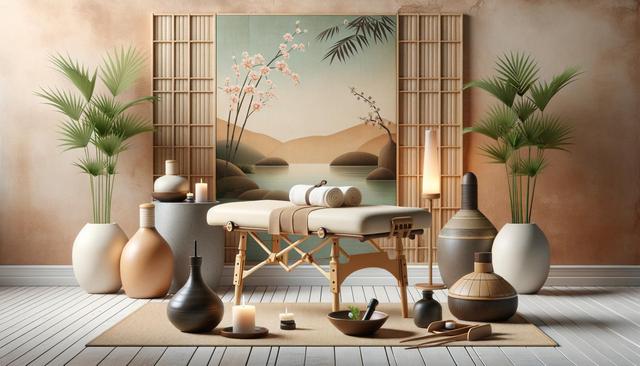The Roots of Asian Massage Therapies
Asian massage practices are deeply rooted in centuries-old traditions that emphasize harmony between body, mind, and spirit. Originating from countries such as China, Thailand, Japan, and India, these techniques have evolved over generations while retaining their core principles. Many of these methods are based on the belief that energy flows through the body along specific pathways, and disruptions in this flow can lead to physical or emotional discomfort. By working along these energy channels, known as meridians in Traditional Chinese Medicine or sen lines in Thai massage, therapists aim to restore balance and improve overall health.
These traditional methods are not only about relaxation but also incorporate therapeutic elements. For example, Chinese Tui Na involves rhythmic compression and acupressure techniques, while Japanese Shiatsu focuses on finger pressure along energy lines. Such practices are often used in conjunction with herbal remedies, breathing techniques, or meditation, enhancing their holistic benefits.
Key Techniques and Their Benefits
Each type of Asian massage technique brings distinct approaches to healing and wellness. Although methods vary by region and philosophy, many share common goals: to reduce stress, improve circulation, and support the body’s natural healing processes. Some of the most well-known forms include:
- Thai Massage: A dynamic therapy that combines acupressure, assisted yoga postures, and deep stretching to enhance flexibility and energy flow.
- Shiatsu: A Japanese technique that uses finger pressure on specific points to release tension, boost circulation, and support internal organ function.
- Tui Na: A Chinese modality that includes kneading, rolling, and pressing techniques to treat musculoskeletal issues and stimulate Qi (life force).
- Ayurvedic Massage: Originating from India, this method uses warm herbal oils and long strokes to promote detoxification and relaxation.
The benefits of these approaches extend beyond the physical. Regular sessions can support better sleep, reduced anxiety, and improved focus, making these massages a valuable part of a comprehensive wellness routine.
The Mind-Body Connection in Asian Massage
One of the defining features of Asian massage is its emphasis on the mind-body connection. Unlike some Western approaches that may focus solely on physical relief, Asian therapies often aim to address emotional and psychological imbalances as well. The act of touch, when done mindfully and with intention, can promote a state of calm and mental clarity. This aspect of massage is particularly beneficial for those dealing with chronic stress or emotional fatigue.
For example, the meditative nature of Thai massage encourages deep breathing and mindfulness, helping individuals become more attuned to their bodies. Similarly, Ayurvedic massage often includes calming mantras or essential oils chosen for their soothing effects on the mind. These elements help create a full sensory experience that nurtures both internal and external wellbeing.
Incorporating Massage into a Wellness Lifestyle
Integrating Asian massage into your lifestyle doesn’t require drastic changes. Even occasional sessions can contribute to a more balanced and health-focused routine. Many wellness enthusiasts find that a monthly massage helps them stay grounded and better manage daily stressors. For those with more specific health concerns, working with a qualified therapist can provide targeted relief.
Here are a few tips for making Asian massage part of your wellness plan:
- Schedule regular appointments to maintain consistent benefits.
- Communicate openly with your therapist about your needs and preferences.
- Combine massage with other wellness practices like yoga, meditation, or herbal therapies.
- Stay hydrated before and after sessions to aid in toxin release and muscle recovery.
Whether you’re looking for stress relief, improved flexibility, or emotional balance, these time-honored rituals offer accessible ways to enhance overall wellbeing.
Choosing the Right Technique for You
With so many forms of Asian massage available, it can be helpful to explore different techniques to find the one that aligns with your needs. Factors such as pressure preference, body condition, and personal wellness goals should guide your choice. For instance, someone seeking deep physical relief may benefit from Tui Na or Thai massage, while those looking for emotional calm might gravitate toward Shiatsu or Ayurvedic treatments.
When selecting a massage style, consider:
- The intensity of pressure you’re comfortable with.
- Any existing health conditions or injuries.
- Your preferred level of physical involvement during the session (e.g., passive vs. active stretching).
- Whether you’re interested in achieving specific therapeutic outcomes or simply seeking relaxation.
Consulting with a knowledgeable practitioner can also help you make an informed decision. Some spas or wellness centers offer introductory sessions that allow you to experience various techniques before committing to a regular routine.
Conclusion: Embrace the Ritual of Rejuvenation
Asian massage traditions offer much more than temporary relief—they represent a holistic lifestyle choice centered around balance, mindfulness, and self-care. Whether you’re new to these practices or returning to them as part of a broader wellness journey, the benefits can be deeply rewarding. By taking time to relax and reconnect with your body through these ancient methods, you support not only physical health but emotional resilience and mental clarity as well. As with any wellness practice, consistency and openness to the experience are key to reaping the full benefits. Embrace the ritual, and let each session be a step toward a more grounded and revitalized you.







